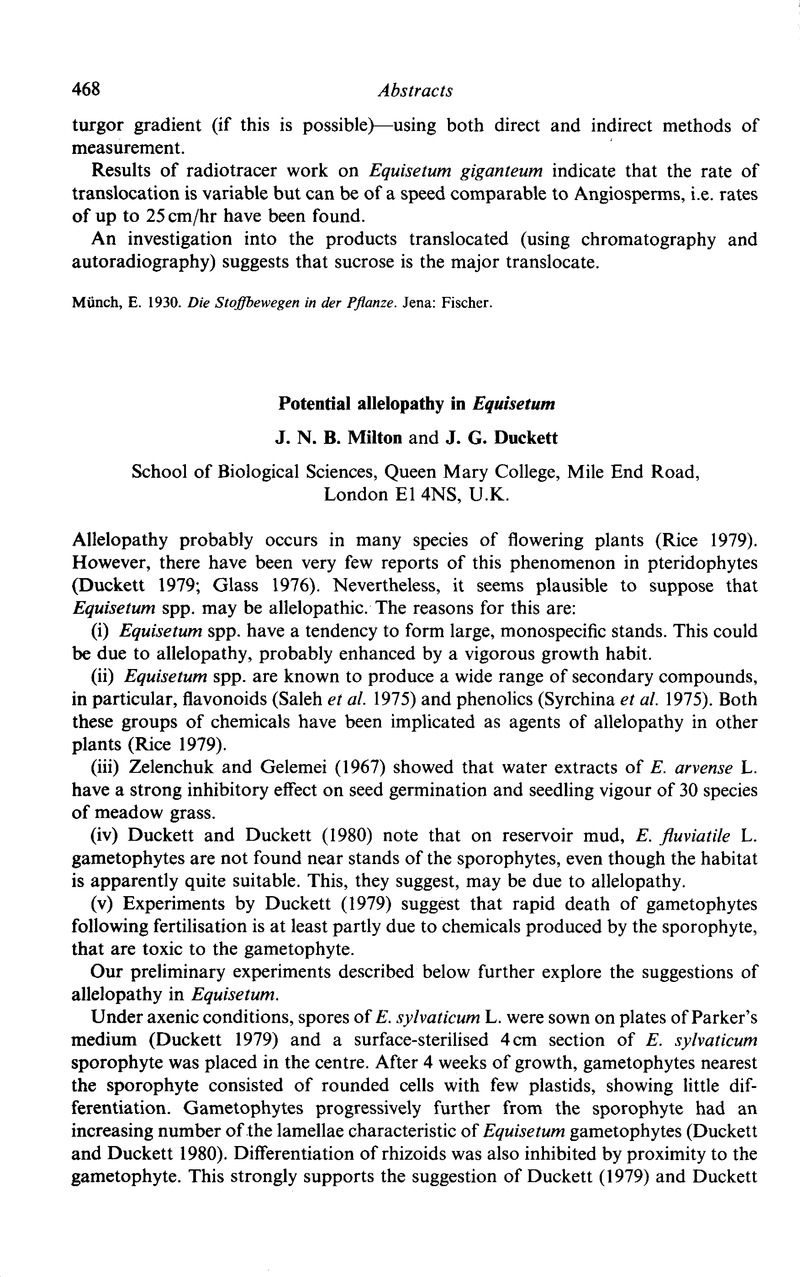No CrossRef data available.
Article contents
Potential allelopathy in Equisetum
Published online by Cambridge University Press: 05 December 2011
Abstract
An abstract is not available for this content so a preview has been provided. As you have access to this content, a full PDF is available via the ‘Save PDF’ action button.

- Type
- Abstracts of Poster Demonstrations
- Information
- Copyright
- Copyright © Royal Society of Edinburgh 1985
References
Duckett, J. G. 1979. An experimental study of the reproductive biology and hybridisation in the European and North American species of Equisetum. Bot. J. Linn. Soc. 79, 205–229.CrossRefGoogle Scholar
Duckett, J. G. and Duckett, A. R. 1980. Reproductive biology and population dynamics of wild gametophytes of Equisetum. Bot. J. Linn. Soc. 80, 1–40.CrossRefGoogle Scholar
Glass, A. D. M. 1976. The allelopathic potential of phenolic acids associated with the rhizosphere of Pteridium aquilinum. Can. J. Bot. 54, 2440–2444.CrossRefGoogle Scholar
Saleh, N. A. M., Majak, W. and Towers, G. H. N. 1972. Flavonoids in Equisetum species. Phytochem. 11, 1095–1099.CrossRefGoogle Scholar
Syrchina, A. I., Voronkov, M. G. and Tyukavkina, N. A. 1975. Phenolic acids from Equisetum arvense. Khim. Prir. Soedin. 11, 416–17.Google Scholar
Zelenchuk, T. and Gelemei, S. 1967. Effect of water extracts of plants on seed germination and early growth of meadow grasses. (In Russian.) Byull. Mosk. Obschch. Ispyt. Prir. Otd. Biol. 72, 93–105.Google Scholar




